Comprehensive Report: Analysis of an RC Frame Building Construction
VerifiedAdded on 2020/03/07
|10
|900
|220
Report
AI Summary
This report provides a detailed analysis of an RC frame building under construction. It examines the footing system, identifying the use of pier and beam footings compatible with masonry wall systems and highlighting their advantages and limitations. The report then delves into the structural systems, specifically the concrete flooring system, detailing the construction sequence, reinforcement techniques, and the significance of rebar specifications. Furthermore, it discusses the wall systems, noting their non-load-bearing nature in the framed structure and the absence of shear walls. The report also covers the building's services, including the gutter and drainage systems, and various approaches to stormwater management. Finally, it analyzes the roof system, specifying a steep sloped hip and valley roof with shingled cladding, and emphasizes the importance of quality control in formwork to ensure structural integrity and aesthetic appeal. The report references relevant Australian Standards for concrete finishes.
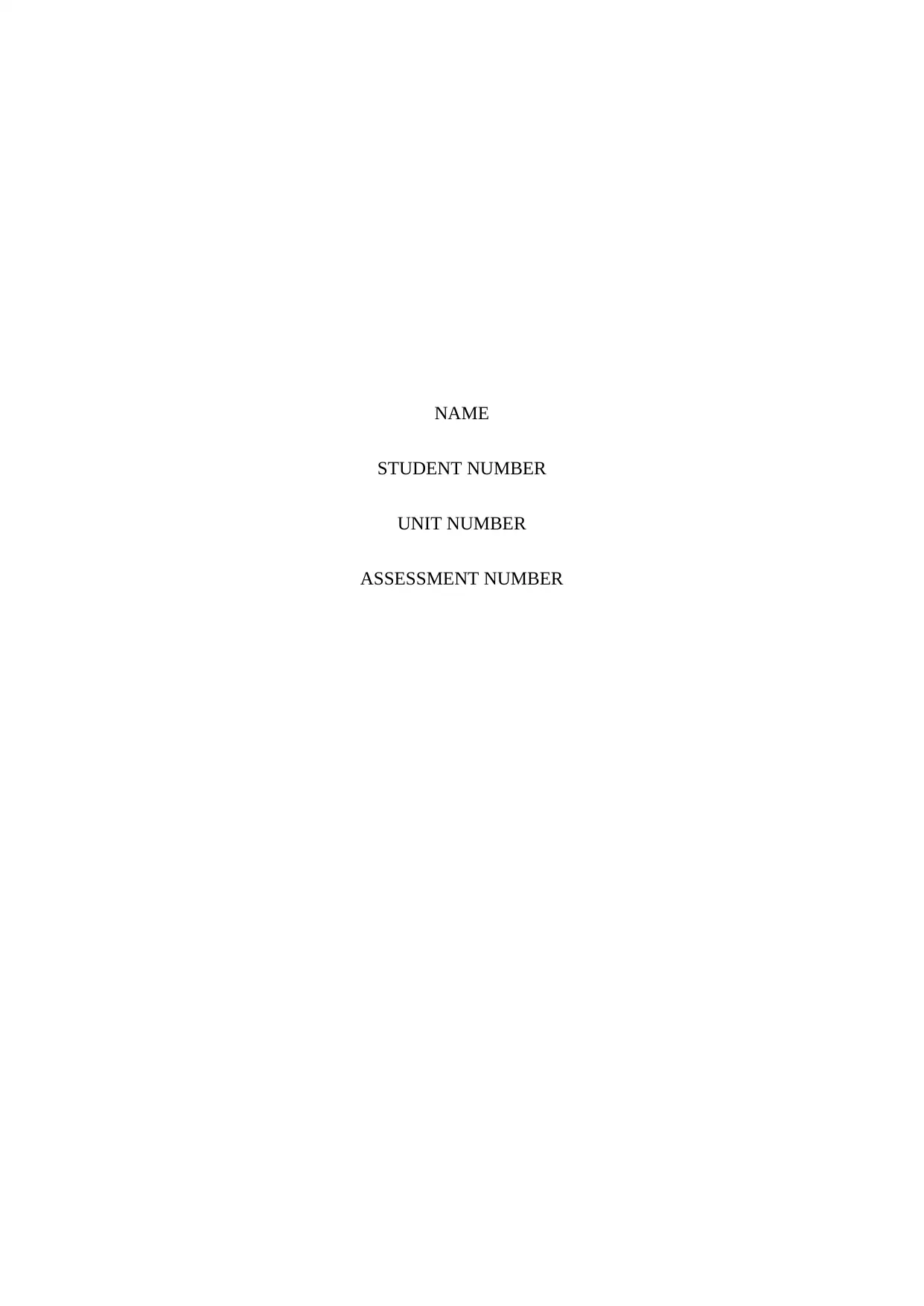
NAME
STUDENT NUMBER
UNIT NUMBER
ASSESSMENT NUMBER
STUDENT NUMBER
UNIT NUMBER
ASSESSMENT NUMBER
Paraphrase This Document
Need a fresh take? Get an instant paraphrase of this document with our AI Paraphraser
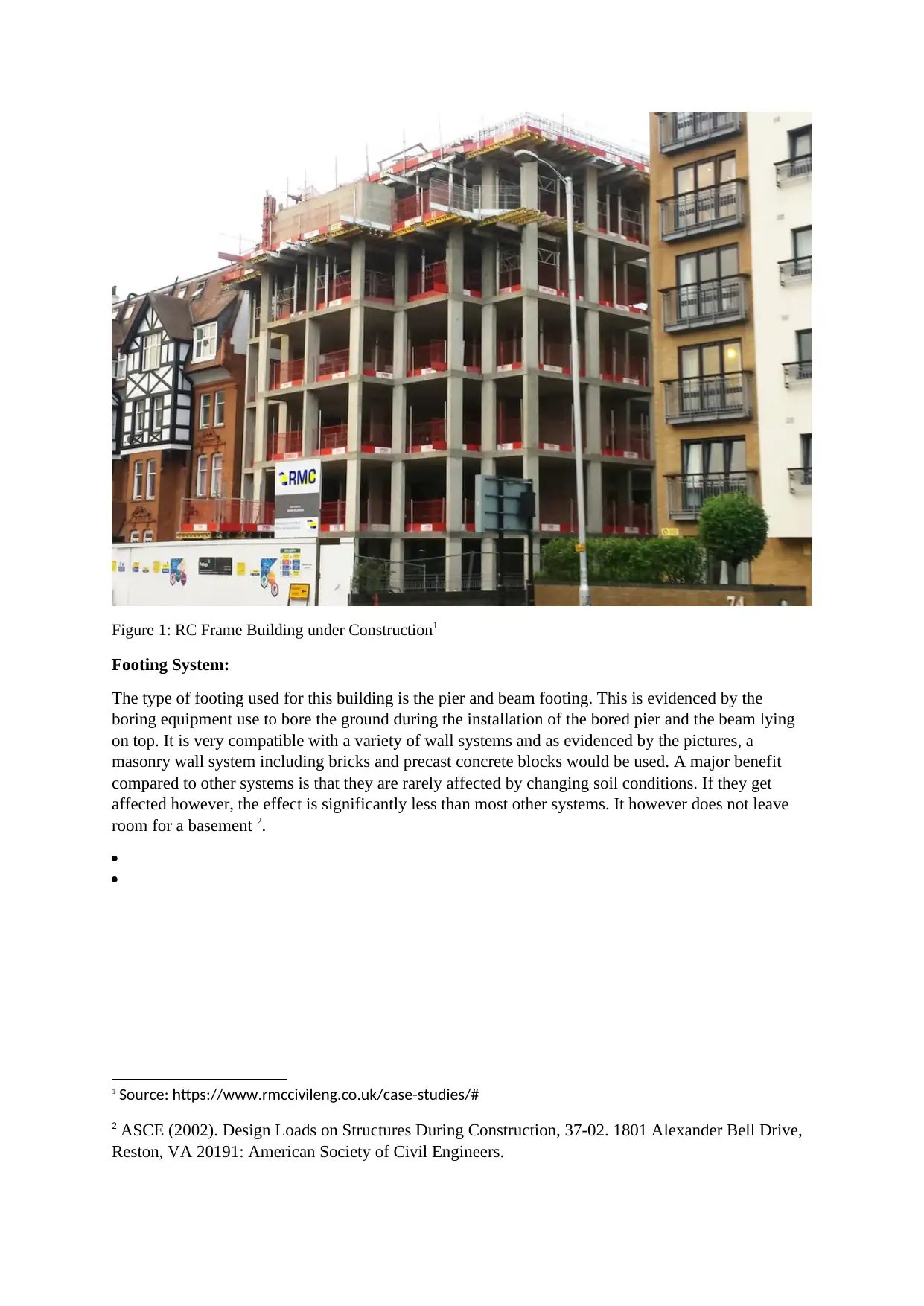
Figure 1: RC Frame Building under Construction1
Footing System:
The type of footing used for this building is the pier and beam footing. This is evidenced by the
boring equipment use to bore the ground during the installation of the bored pier and the beam lying
on top. It is very compatible with a variety of wall systems and as evidenced by the pictures, a
masonry wall system including bricks and precast concrete blocks would be used. A major benefit
compared to other systems is that they are rarely affected by changing soil conditions. If they get
affected however, the effect is significantly less than most other systems. It however does not leave
room for a basement 2.
1 Source: https://www.rmccivileng.co.uk/case-studies/#
2 ASCE (2002). Design Loads on Structures During Construction, 37-02. 1801 Alexander Bell Drive,
Reston, VA 20191: American Society of Civil Engineers.
Footing System:
The type of footing used for this building is the pier and beam footing. This is evidenced by the
boring equipment use to bore the ground during the installation of the bored pier and the beam lying
on top. It is very compatible with a variety of wall systems and as evidenced by the pictures, a
masonry wall system including bricks and precast concrete blocks would be used. A major benefit
compared to other systems is that they are rarely affected by changing soil conditions. If they get
affected however, the effect is significantly less than most other systems. It however does not leave
room for a basement 2.
1 Source: https://www.rmccivileng.co.uk/case-studies/#
2 ASCE (2002). Design Loads on Structures During Construction, 37-02. 1801 Alexander Bell Drive,
Reston, VA 20191: American Society of Civil Engineers.
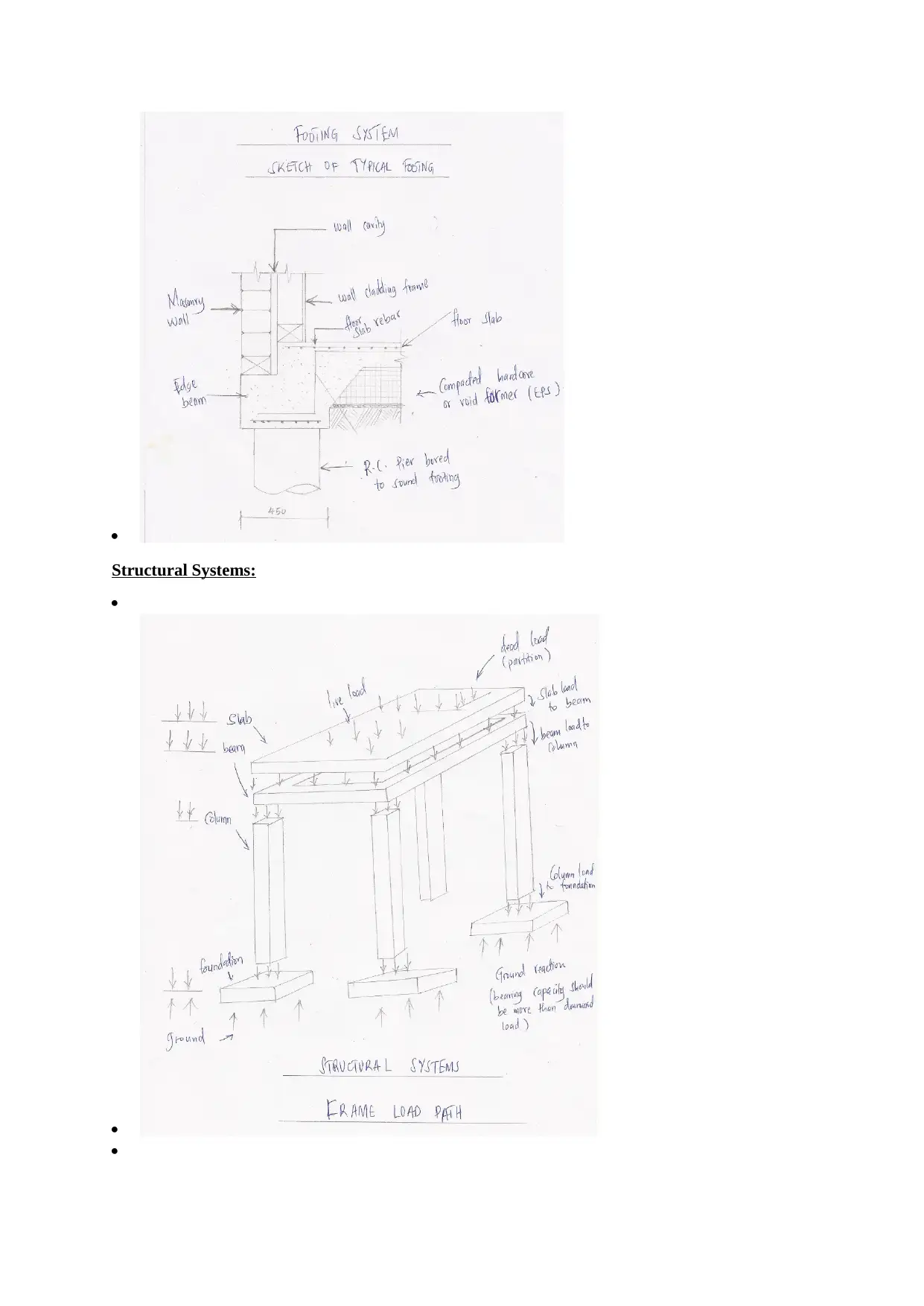
Structural Systems:
Structural Systems:
⊘ This is a preview!⊘
Do you want full access?
Subscribe today to unlock all pages.

Trusted by 1+ million students worldwide
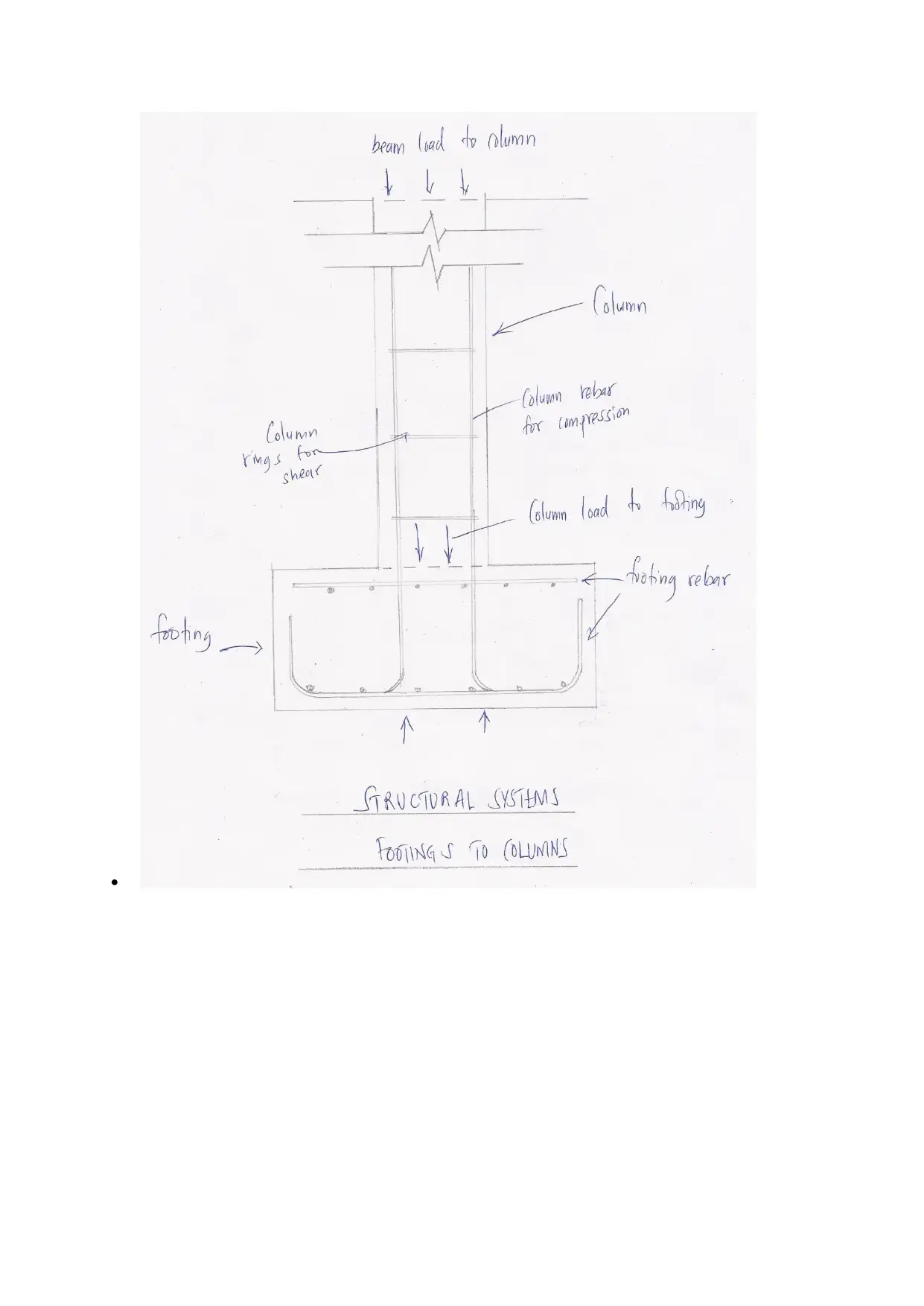
Paraphrase This Document
Need a fresh take? Get an instant paraphrase of this document with our AI Paraphraser
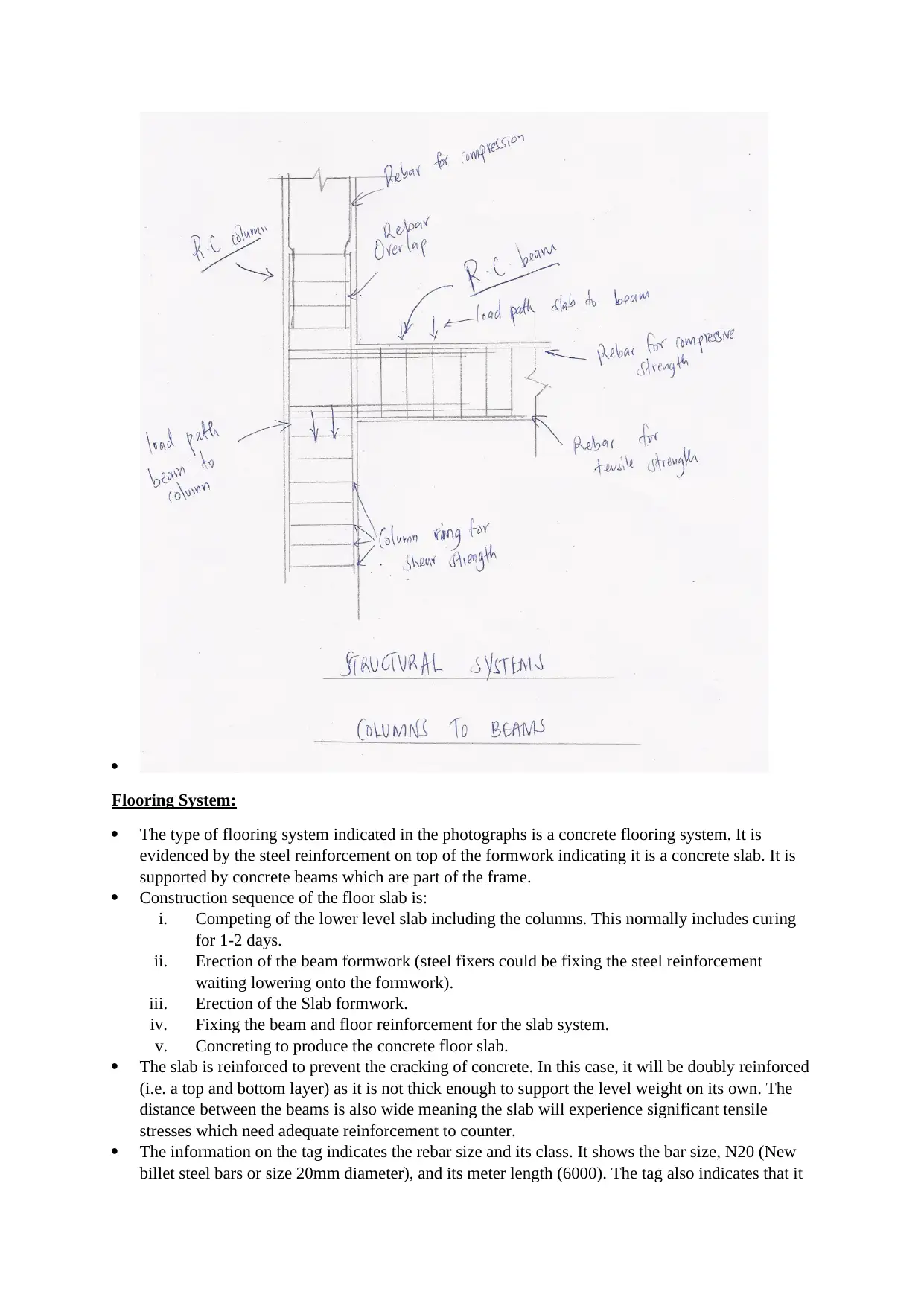
Flooring System:
The type of flooring system indicated in the photographs is a concrete flooring system. It is
evidenced by the steel reinforcement on top of the formwork indicating it is a concrete slab. It is
supported by concrete beams which are part of the frame.
Construction sequence of the floor slab is:
i. Competing of the lower level slab including the columns. This normally includes curing
for 1-2 days.
ii. Erection of the beam formwork (steel fixers could be fixing the steel reinforcement
waiting lowering onto the formwork).
iii. Erection of the Slab formwork.
iv. Fixing the beam and floor reinforcement for the slab system.
v. Concreting to produce the concrete floor slab.
The slab is reinforced to prevent the cracking of concrete. In this case, it will be doubly reinforced
(i.e. a top and bottom layer) as it is not thick enough to support the level weight on its own. The
distance between the beams is also wide meaning the slab will experience significant tensile
stresses which need adequate reinforcement to counter.
The information on the tag indicates the rebar size and its class. It shows the bar size, N20 (New
billet steel bars or size 20mm diameter), and its meter length (6000). The tag also indicates that it
Flooring System:
The type of flooring system indicated in the photographs is a concrete flooring system. It is
evidenced by the steel reinforcement on top of the formwork indicating it is a concrete slab. It is
supported by concrete beams which are part of the frame.
Construction sequence of the floor slab is:
i. Competing of the lower level slab including the columns. This normally includes curing
for 1-2 days.
ii. Erection of the beam formwork (steel fixers could be fixing the steel reinforcement
waiting lowering onto the formwork).
iii. Erection of the Slab formwork.
iv. Fixing the beam and floor reinforcement for the slab system.
v. Concreting to produce the concrete floor slab.
The slab is reinforced to prevent the cracking of concrete. In this case, it will be doubly reinforced
(i.e. a top and bottom layer) as it is not thick enough to support the level weight on its own. The
distance between the beams is also wide meaning the slab will experience significant tensile
stresses which need adequate reinforcement to counter.
The information on the tag indicates the rebar size and its class. It shows the bar size, N20 (New
billet steel bars or size 20mm diameter), and its meter length (6000). The tag also indicates that it
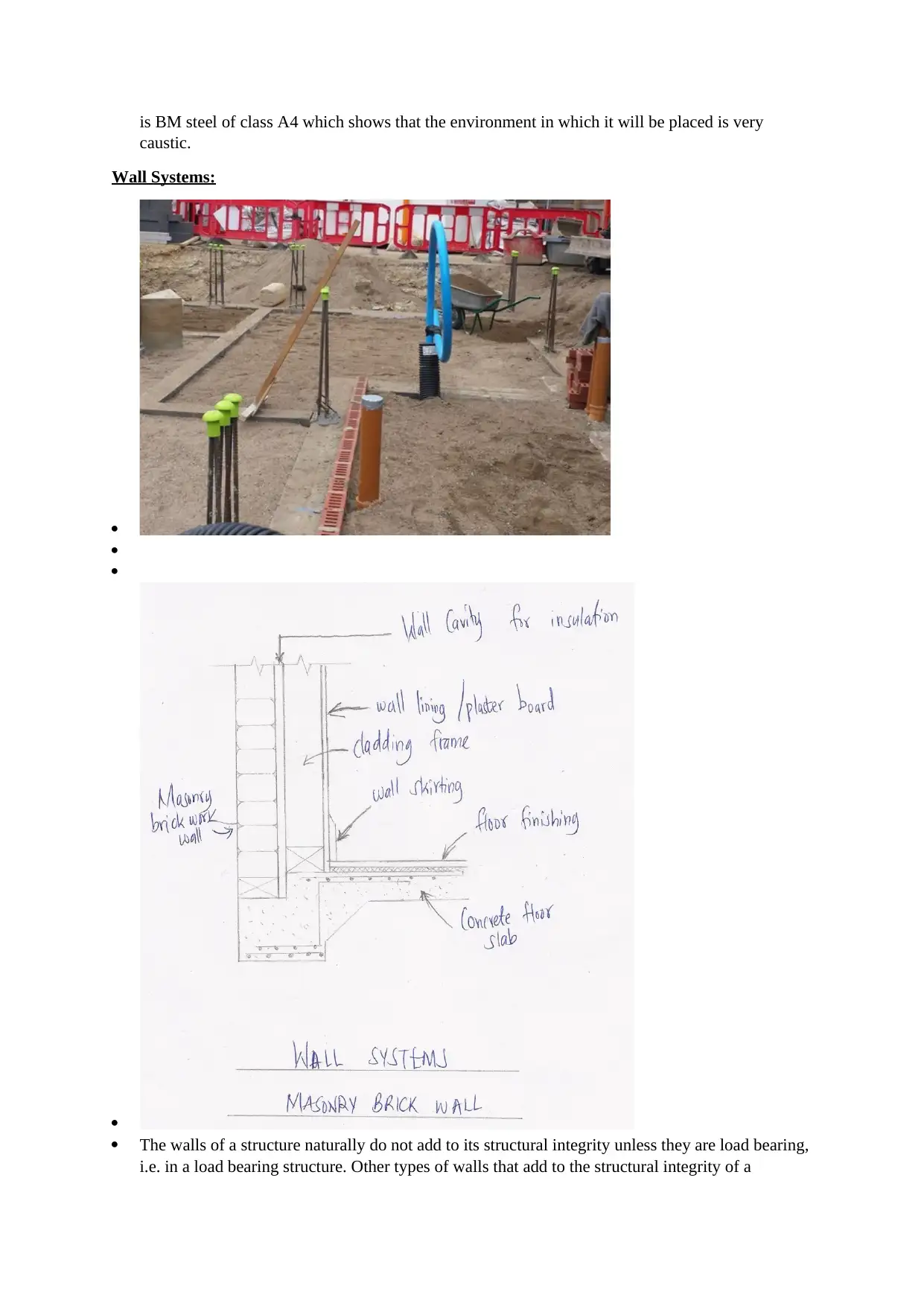
is BM steel of class A4 which shows that the environment in which it will be placed is very
caustic.
Wall Systems:
The walls of a structure naturally do not add to its structural integrity unless they are load bearing,
i.e. in a load bearing structure. Other types of walls that add to the structural integrity of a
caustic.
Wall Systems:
The walls of a structure naturally do not add to its structural integrity unless they are load bearing,
i.e. in a load bearing structure. Other types of walls that add to the structural integrity of a
⊘ This is a preview!⊘
Do you want full access?
Subscribe today to unlock all pages.

Trusted by 1+ million students worldwide
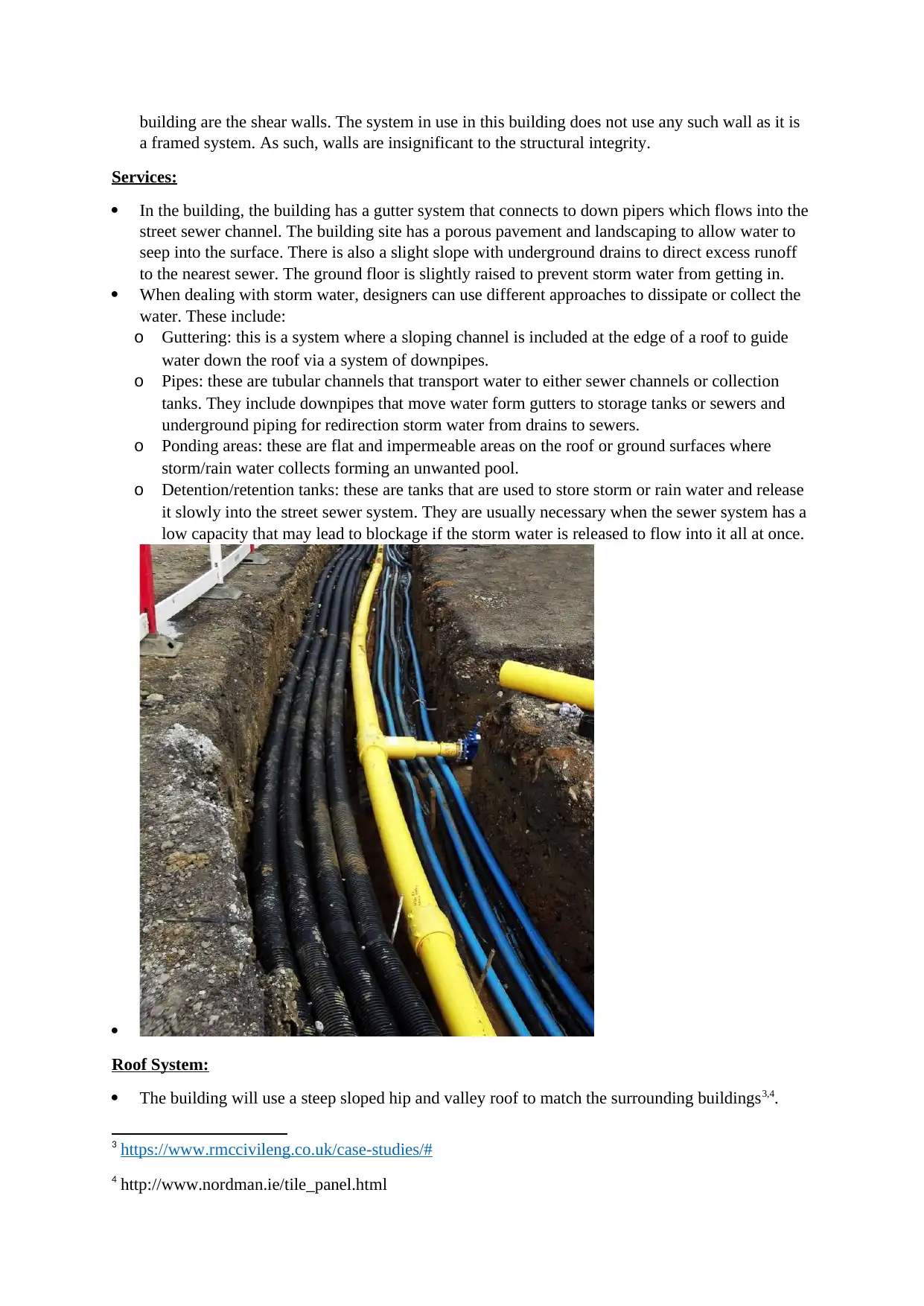
building are the shear walls. The system in use in this building does not use any such wall as it is
a framed system. As such, walls are insignificant to the structural integrity.
Services:
In the building, the building has a gutter system that connects to down pipers which flows into the
street sewer channel. The building site has a porous pavement and landscaping to allow water to
seep into the surface. There is also a slight slope with underground drains to direct excess runoff
to the nearest sewer. The ground floor is slightly raised to prevent storm water from getting in.
When dealing with storm water, designers can use different approaches to dissipate or collect the
water. These include:
o Guttering: this is a system where a sloping channel is included at the edge of a roof to guide
water down the roof via a system of downpipes.
o Pipes: these are tubular channels that transport water to either sewer channels or collection
tanks. They include downpipes that move water form gutters to storage tanks or sewers and
underground piping for redirection storm water from drains to sewers.
o Ponding areas: these are flat and impermeable areas on the roof or ground surfaces where
storm/rain water collects forming an unwanted pool.
o Detention/retention tanks: these are tanks that are used to store storm or rain water and release
it slowly into the street sewer system. They are usually necessary when the sewer system has a
low capacity that may lead to blockage if the storm water is released to flow into it all at once.
Roof System:
The building will use a steep sloped hip and valley roof to match the surrounding buildings3,4.
3 https://www.rmccivileng.co.uk/case-studies/#
4 http://www.nordman.ie/tile_panel.html
a framed system. As such, walls are insignificant to the structural integrity.
Services:
In the building, the building has a gutter system that connects to down pipers which flows into the
street sewer channel. The building site has a porous pavement and landscaping to allow water to
seep into the surface. There is also a slight slope with underground drains to direct excess runoff
to the nearest sewer. The ground floor is slightly raised to prevent storm water from getting in.
When dealing with storm water, designers can use different approaches to dissipate or collect the
water. These include:
o Guttering: this is a system where a sloping channel is included at the edge of a roof to guide
water down the roof via a system of downpipes.
o Pipes: these are tubular channels that transport water to either sewer channels or collection
tanks. They include downpipes that move water form gutters to storage tanks or sewers and
underground piping for redirection storm water from drains to sewers.
o Ponding areas: these are flat and impermeable areas on the roof or ground surfaces where
storm/rain water collects forming an unwanted pool.
o Detention/retention tanks: these are tanks that are used to store storm or rain water and release
it slowly into the street sewer system. They are usually necessary when the sewer system has a
low capacity that may lead to blockage if the storm water is released to flow into it all at once.
Roof System:
The building will use a steep sloped hip and valley roof to match the surrounding buildings3,4.
3 https://www.rmccivileng.co.uk/case-studies/#
4 http://www.nordman.ie/tile_panel.html
Paraphrase This Document
Need a fresh take? Get an instant paraphrase of this document with our AI Paraphraser

Shingled cladding will be used5.
5 Lo, Y.T. & Leung, W.M. & Cui, Hongzhi. (2005). Roof construction defects of medium-rise
buildings in sub-tropical climates. Structural Survey. 23. 203-209. 10.1108/02630800510610134.
Shingled cladding will be used5.
5 Lo, Y.T. & Leung, W.M. & Cui, Hongzhi. (2005). Roof construction defects of medium-rise
buildings in sub-tropical climates. Structural Survey. 23. 203-209. 10.1108/02630800510610134.
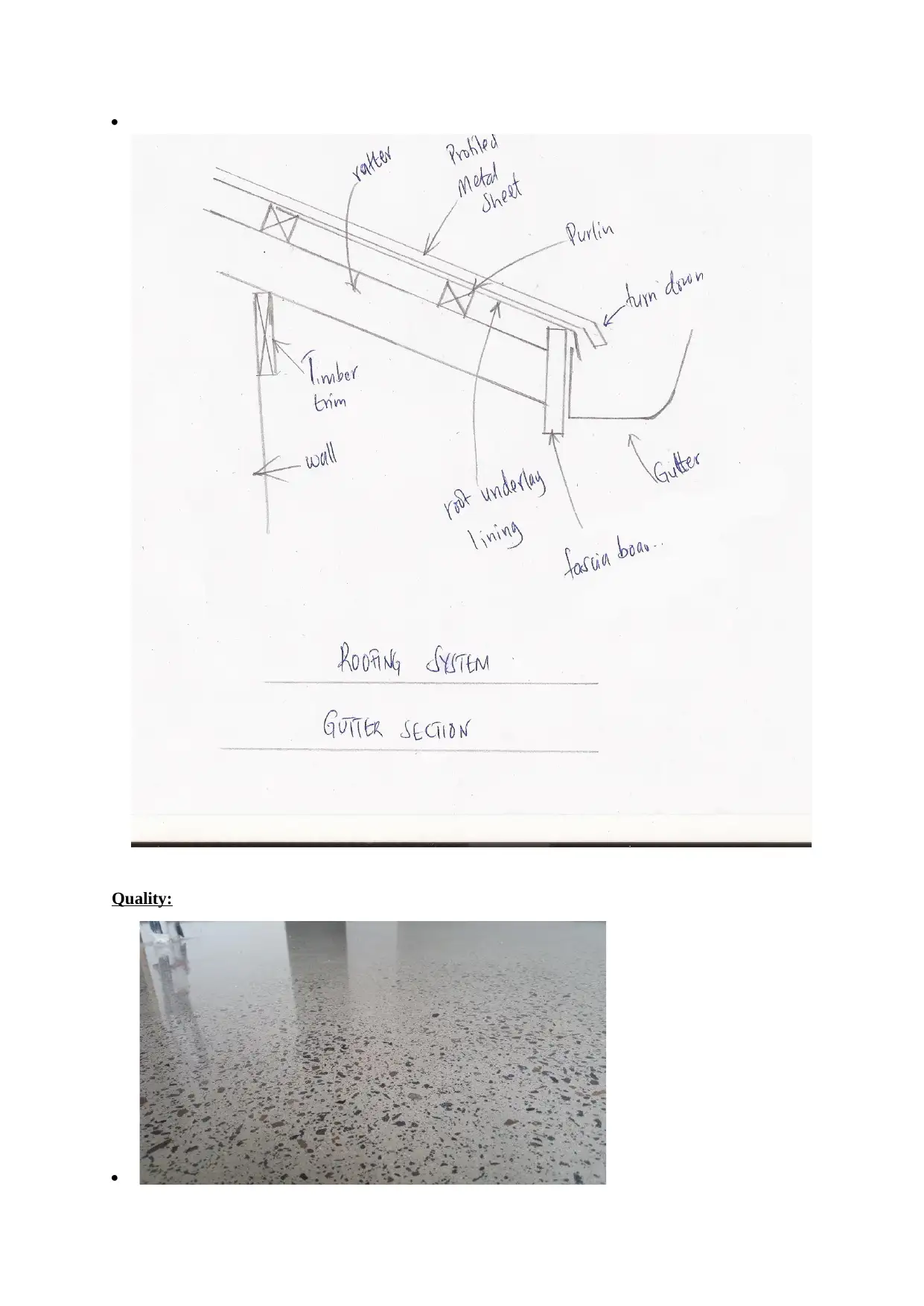
Quality:
Quality:
⊘ This is a preview!⊘
Do you want full access?
Subscribe today to unlock all pages.

Trusted by 1+ million students worldwide
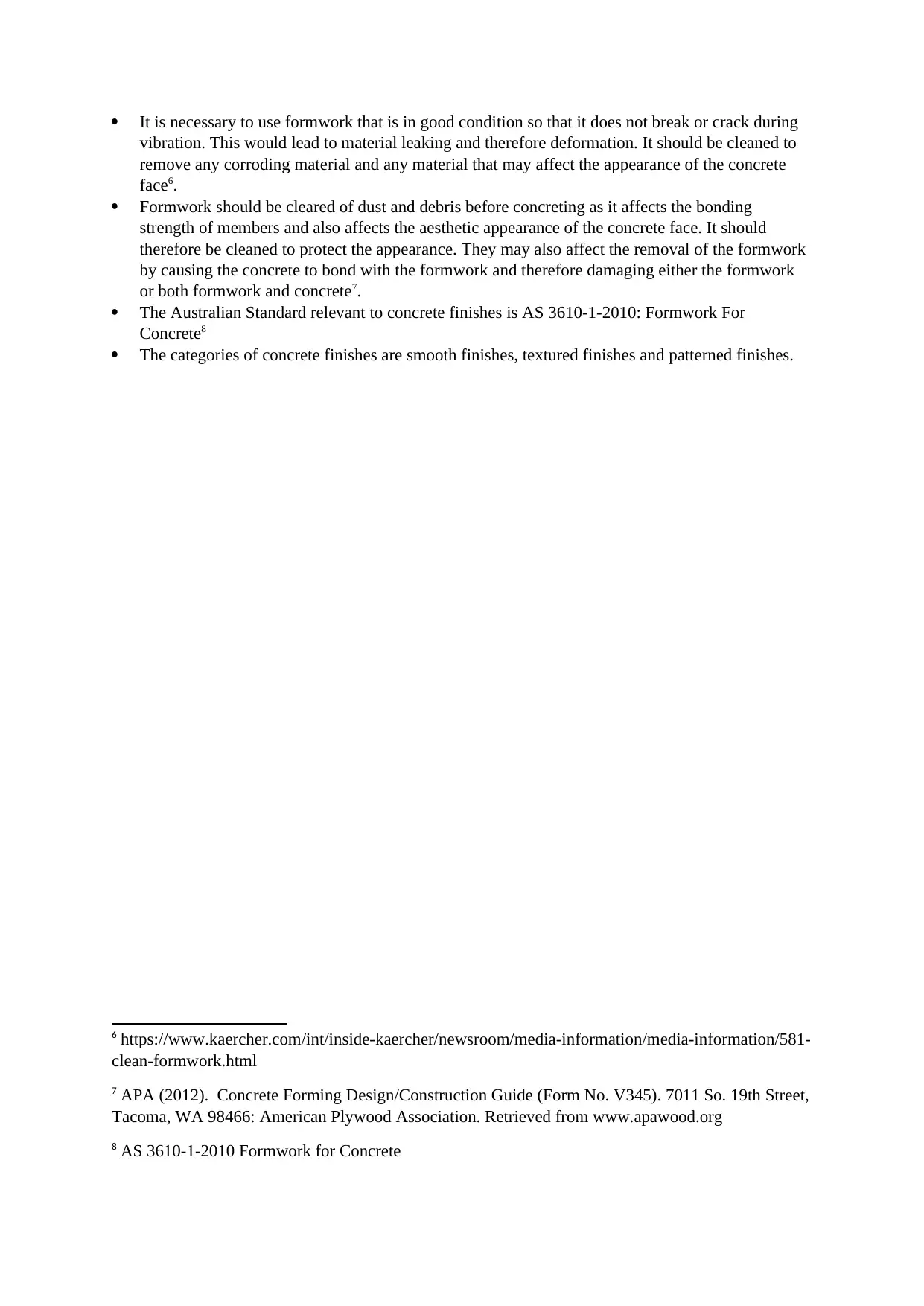
It is necessary to use formwork that is in good condition so that it does not break or crack during
vibration. This would lead to material leaking and therefore deformation. It should be cleaned to
remove any corroding material and any material that may affect the appearance of the concrete
face6.
Formwork should be cleared of dust and debris before concreting as it affects the bonding
strength of members and also affects the aesthetic appearance of the concrete face. It should
therefore be cleaned to protect the appearance. They may also affect the removal of the formwork
by causing the concrete to bond with the formwork and therefore damaging either the formwork
or both formwork and concrete7.
The Australian Standard relevant to concrete finishes is AS 3610-1-2010: Formwork For
Concrete8
The categories of concrete finishes are smooth finishes, textured finishes and patterned finishes.
6 https://www.kaercher.com/int/inside-kaercher/newsroom/media-information/media-information/581-
clean-formwork.html
7 APA (2012). Concrete Forming Design/Construction Guide (Form No. V345). 7011 So. 19th Street,
Tacoma, WA 98466: American Plywood Association. Retrieved from www.apawood.org
8 AS 3610-1-2010 Formwork for Concrete
vibration. This would lead to material leaking and therefore deformation. It should be cleaned to
remove any corroding material and any material that may affect the appearance of the concrete
face6.
Formwork should be cleared of dust and debris before concreting as it affects the bonding
strength of members and also affects the aesthetic appearance of the concrete face. It should
therefore be cleaned to protect the appearance. They may also affect the removal of the formwork
by causing the concrete to bond with the formwork and therefore damaging either the formwork
or both formwork and concrete7.
The Australian Standard relevant to concrete finishes is AS 3610-1-2010: Formwork For
Concrete8
The categories of concrete finishes are smooth finishes, textured finishes and patterned finishes.
6 https://www.kaercher.com/int/inside-kaercher/newsroom/media-information/media-information/581-
clean-formwork.html
7 APA (2012). Concrete Forming Design/Construction Guide (Form No. V345). 7011 So. 19th Street,
Tacoma, WA 98466: American Plywood Association. Retrieved from www.apawood.org
8 AS 3610-1-2010 Formwork for Concrete
1 out of 10
Related Documents
Your All-in-One AI-Powered Toolkit for Academic Success.
+13062052269
info@desklib.com
Available 24*7 on WhatsApp / Email
![[object Object]](/_next/static/media/star-bottom.7253800d.svg)
Unlock your academic potential
Copyright © 2020–2025 A2Z Services. All Rights Reserved. Developed and managed by ZUCOL.





